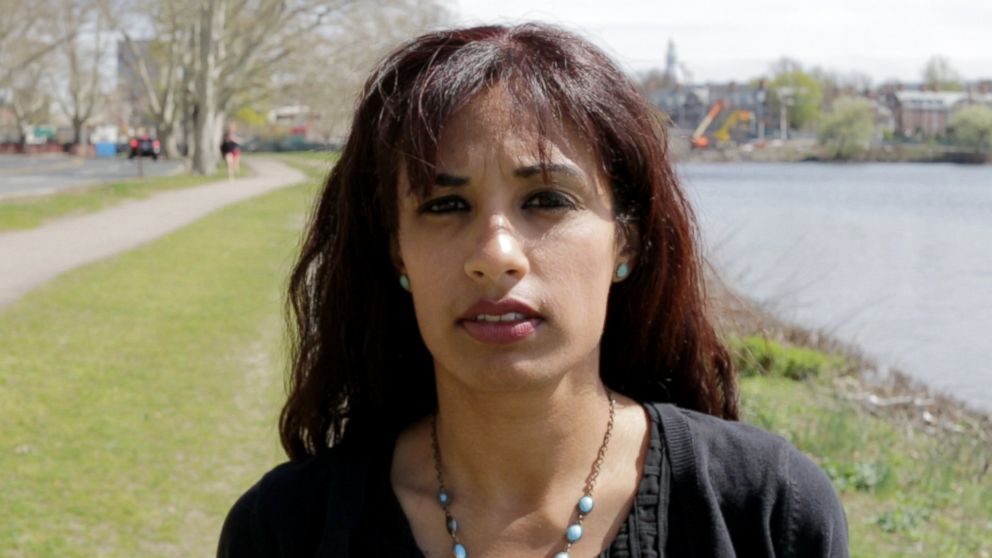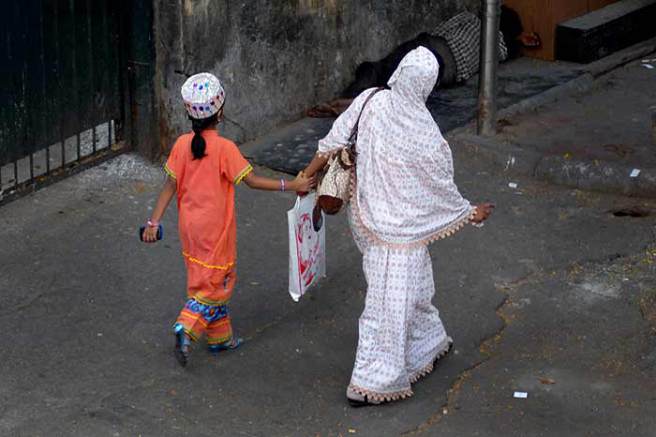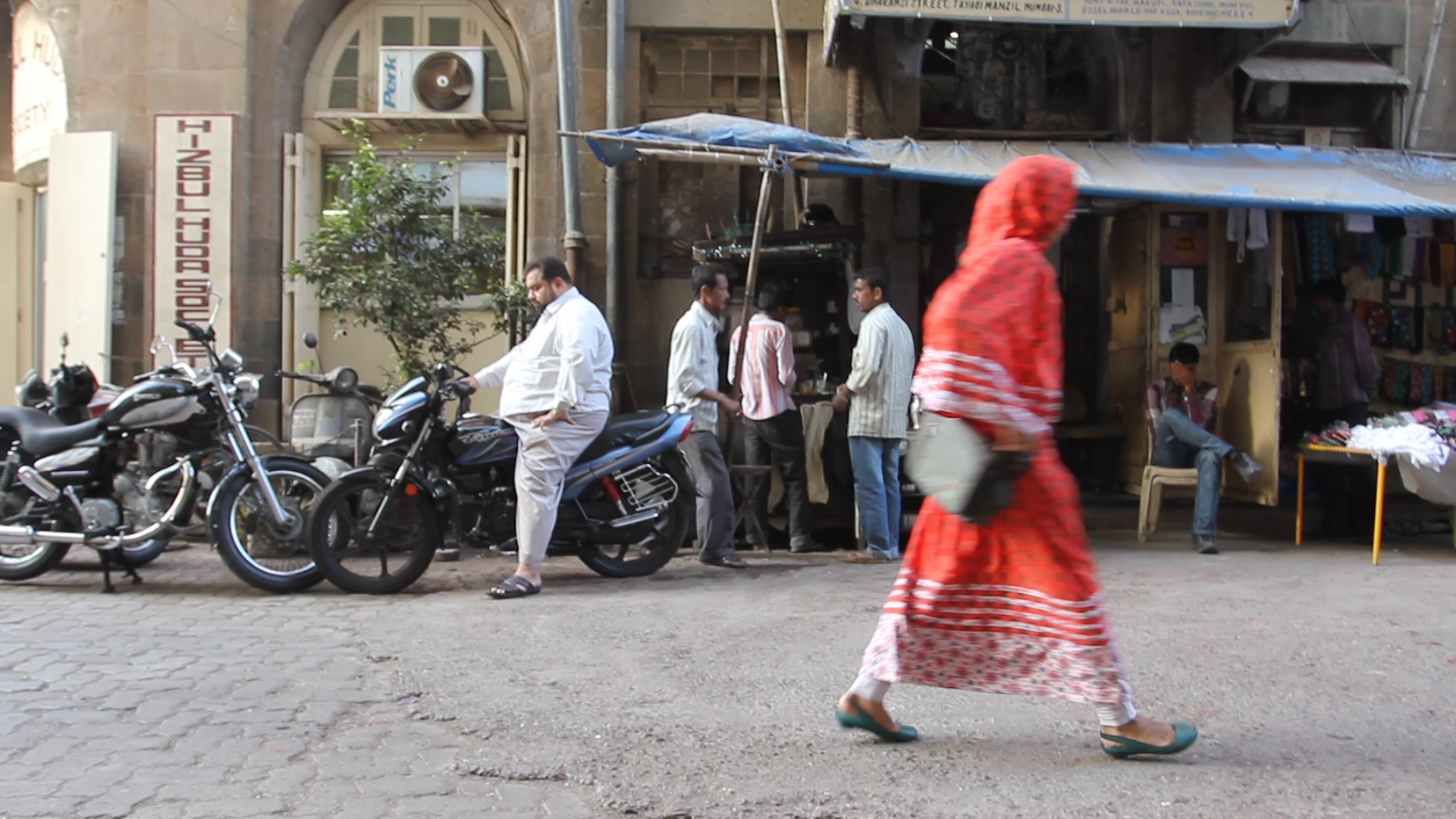On July 7, 2016, we at Sahiyo hosted our first Twitter chat on Female Genital Cutting (FGC) from our Twitter handle, @sahiyo2016.
The need for an online debate on this subject evolved for various reasons. For the past several months, Dawoodi Bohras on social media have been increasingly vocal about their varied views on female khatna. Then in May, a 17-year-old girl died in Egypt because of excessive bleeding caused by circumcision – a tragic reminder of the dangers of FGC even among cultures not known to practice severe forms of cutting. Finally, the controversy over khatna intensified in June, when prestigious news magazine The Economist published a shocking, irresponsible editorial advocating for the allowance of milder, medicalised forms of FGC.
Bohras, who predominantly practice Type 1 FGC – removal of the clitoral hood – were clearly divided on this issue and the time seemed ripe to have a debate on khatna on a platform as public and democratic as Twitter.
We used the hashtag #NoMoreKhatna for the Twitter chat, inviting anyone and everyone to participate – and overall, we can say that the chat was a success. A large number of individuals and prominent organisations joined in to make their voices heard, and we are thankful to all of them.
Most importantly, the chat included the voices of several Dawoodi Bohras who believe khatna must be practiced. Many of them took the trouble of creating new Twitter accounts to participate in this discussion, and their voices helped to showcase the challenges involved in changing social norms around khatna.
We began the chat with a set of basic questions: What is FGC? What are its types? What have you experienced or heard about Bohra khatna? What are the health consequences of FGC? The responses that emerged also led to other discussions.
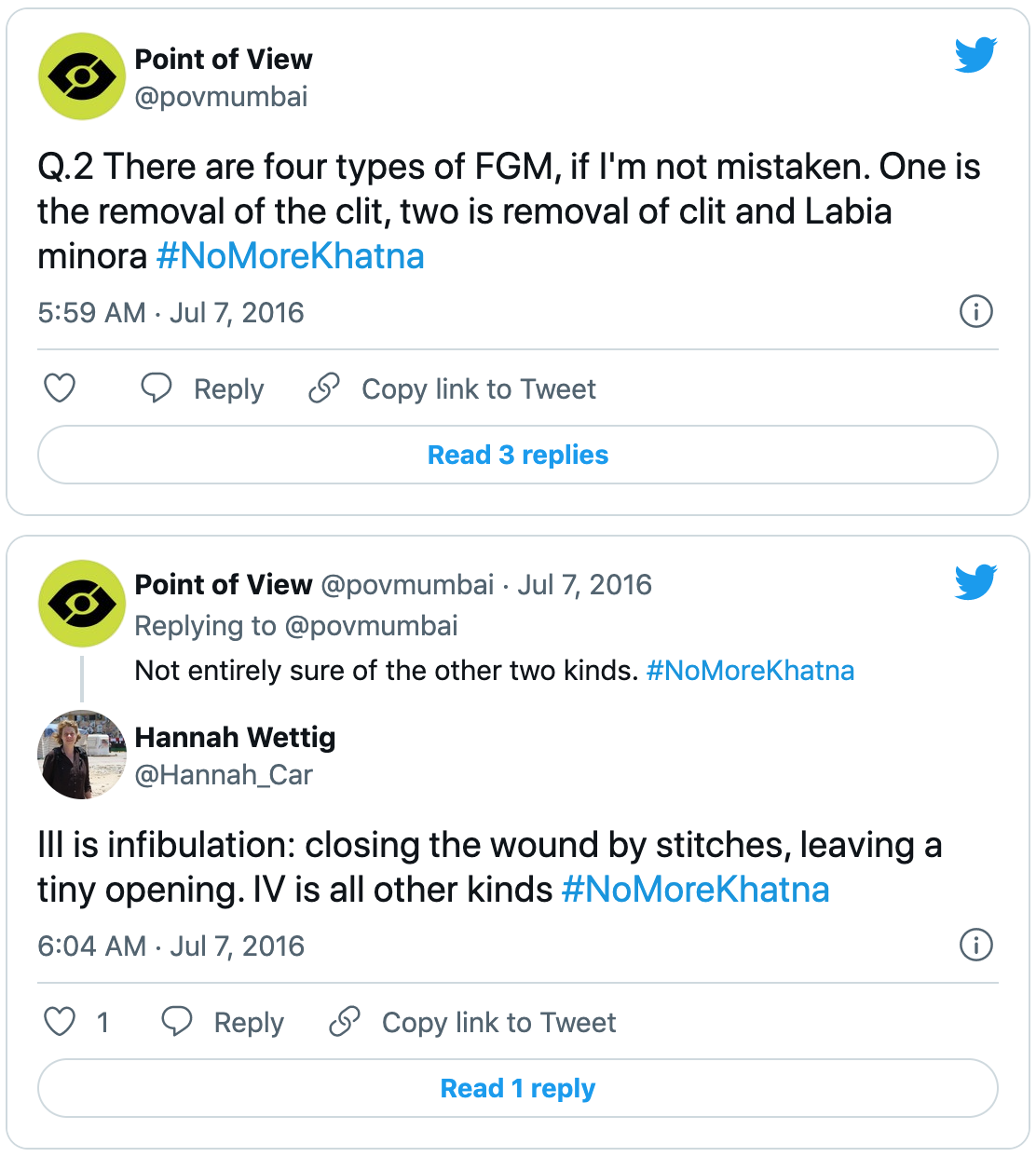
— Priya Goswami (@priyagoswami) July 7, 2016

— Mariya Karimi (@mariyakarimi150) July 7, 2016
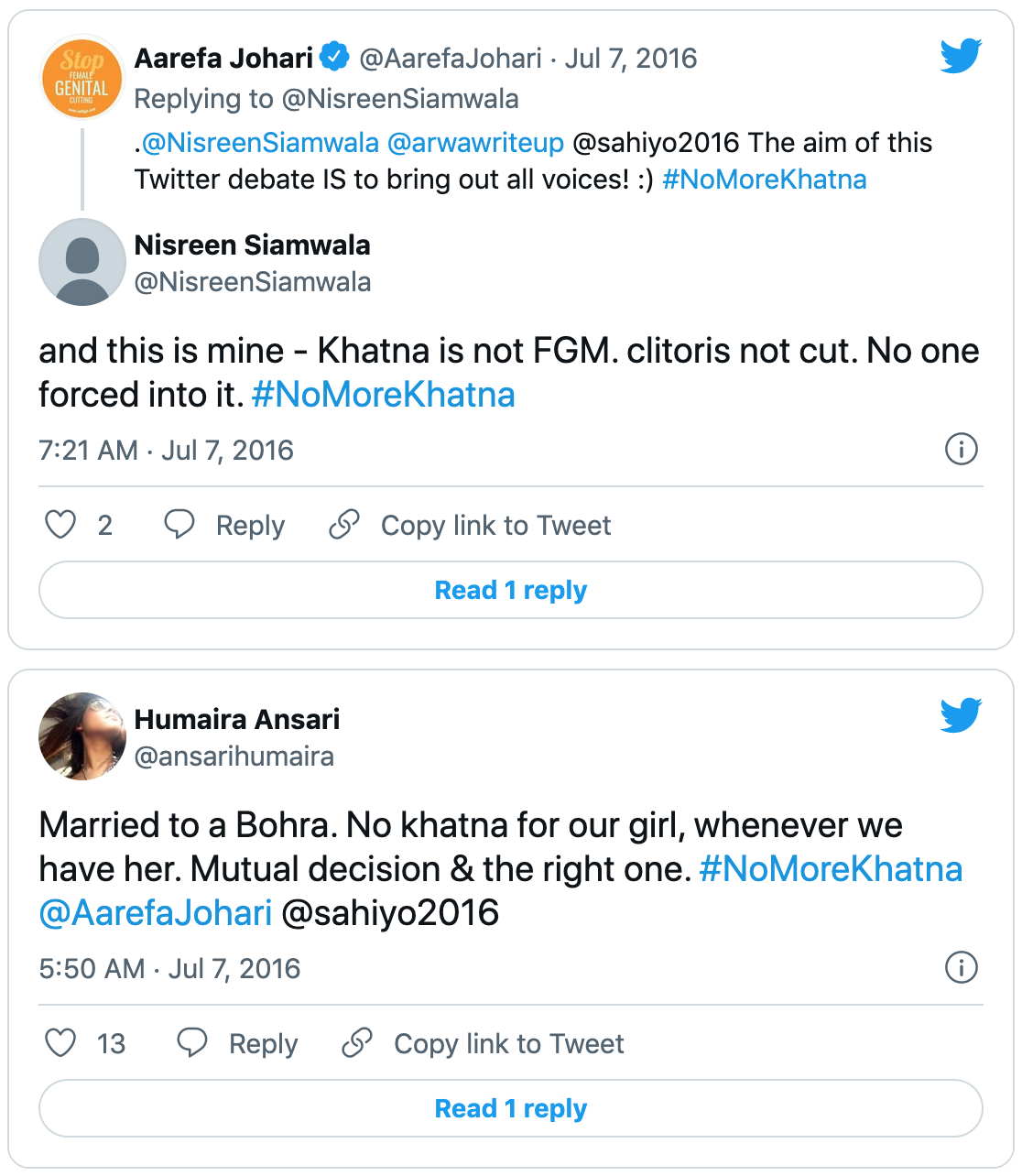
We asked participants about the reasons given for the practice of FGC, and multiple points were brought up.
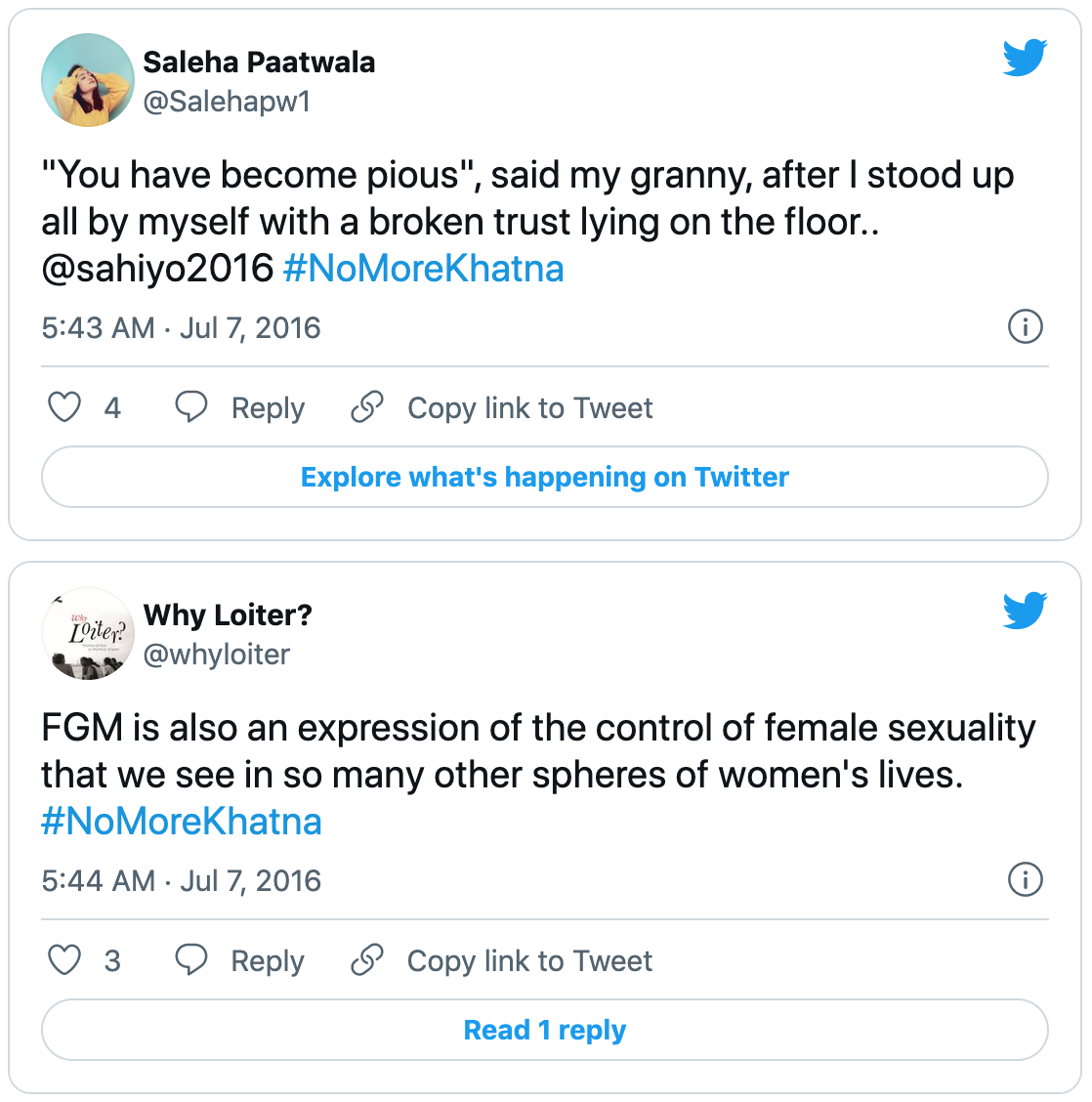
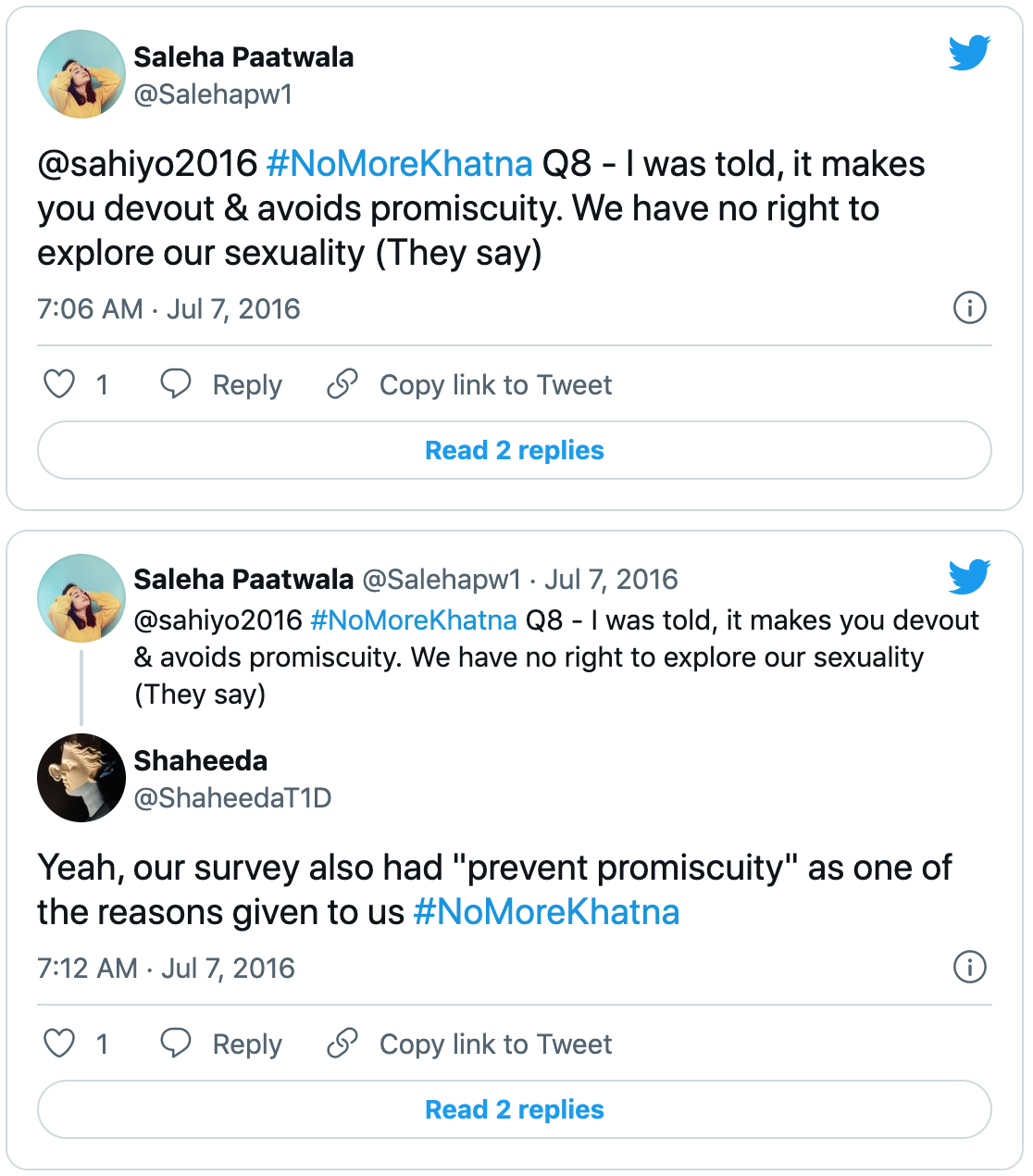
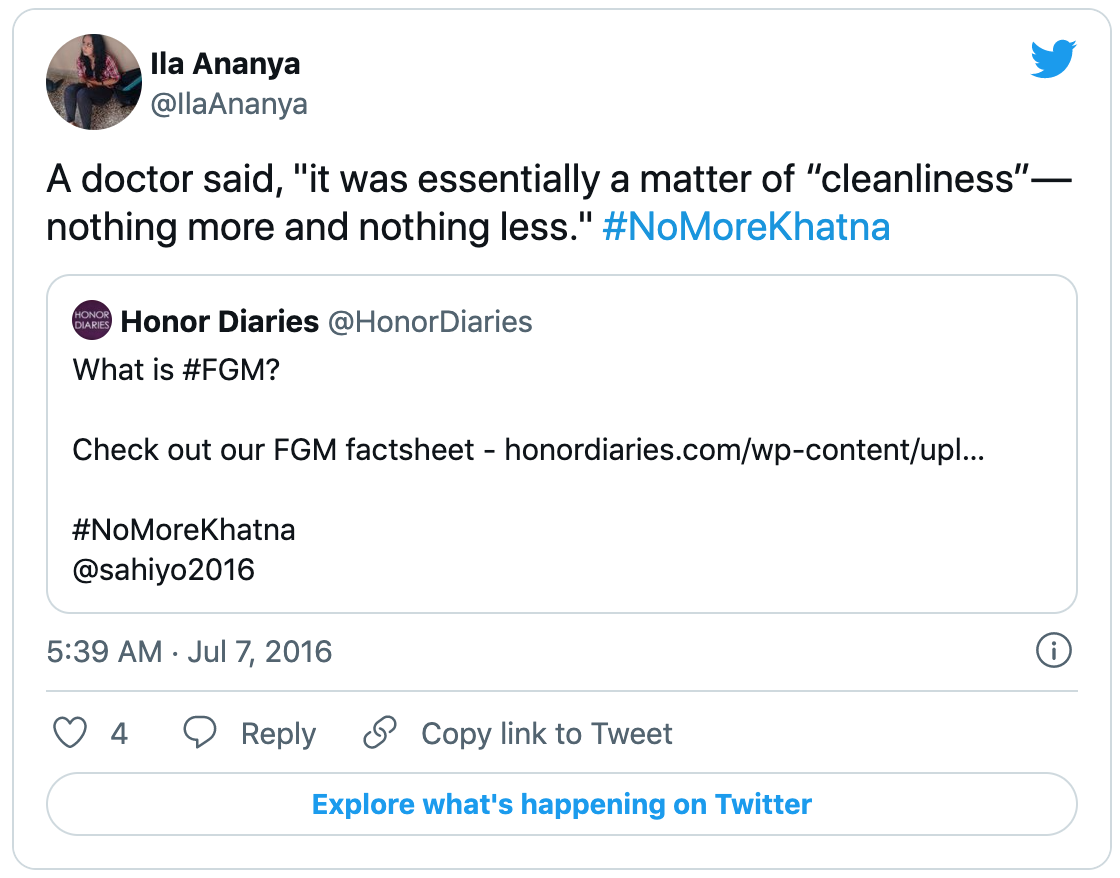
Unsurprisingly, the question of whether milder forms of FGC should be allowed – whether the practice should be treated as a medical procedure – sparked animated debate on the Twitter chat.
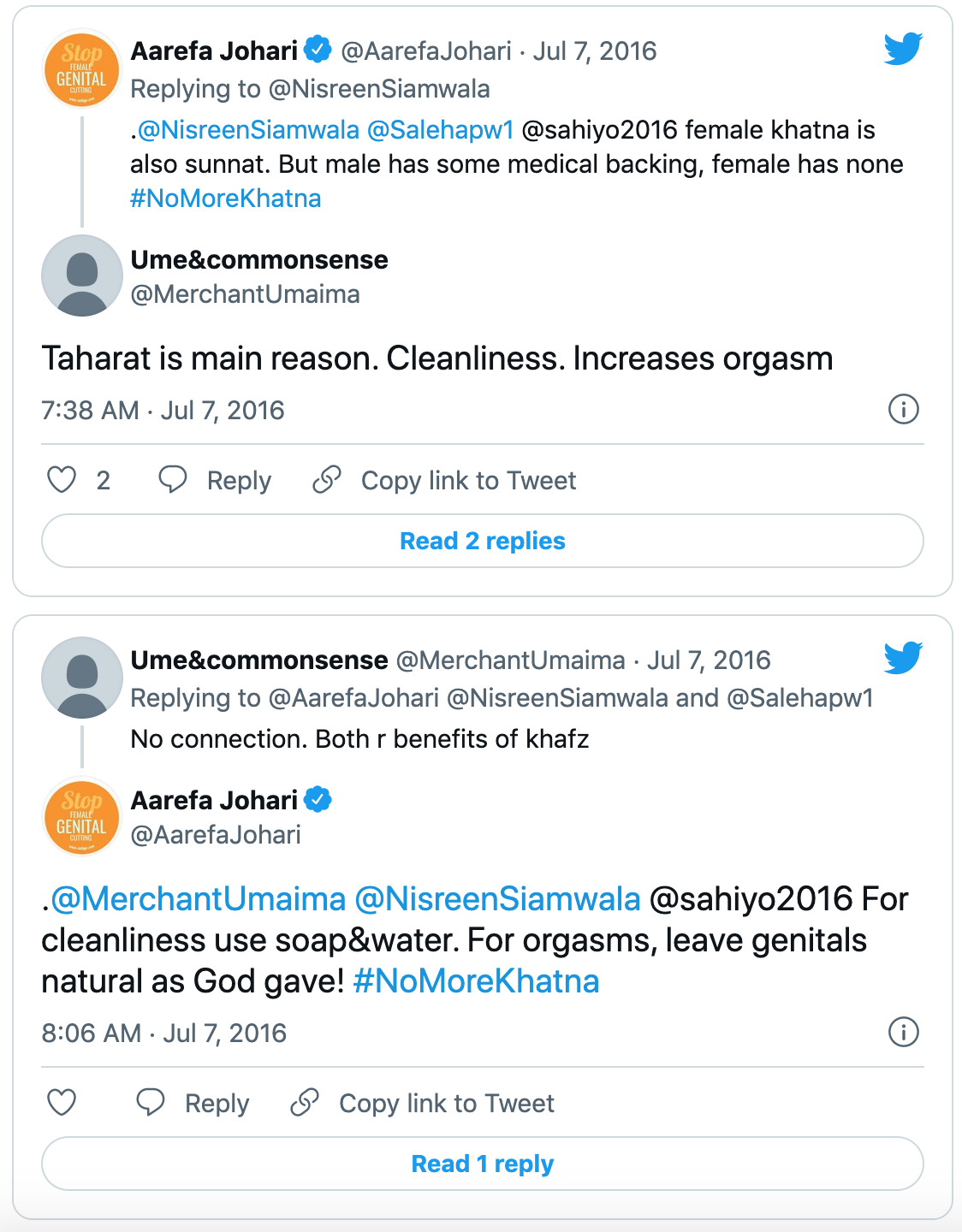
Another controversial aspect of the debate, of course, is the matter of a child’s consent and whether parents have the right to decide whether their daughter should be cut.
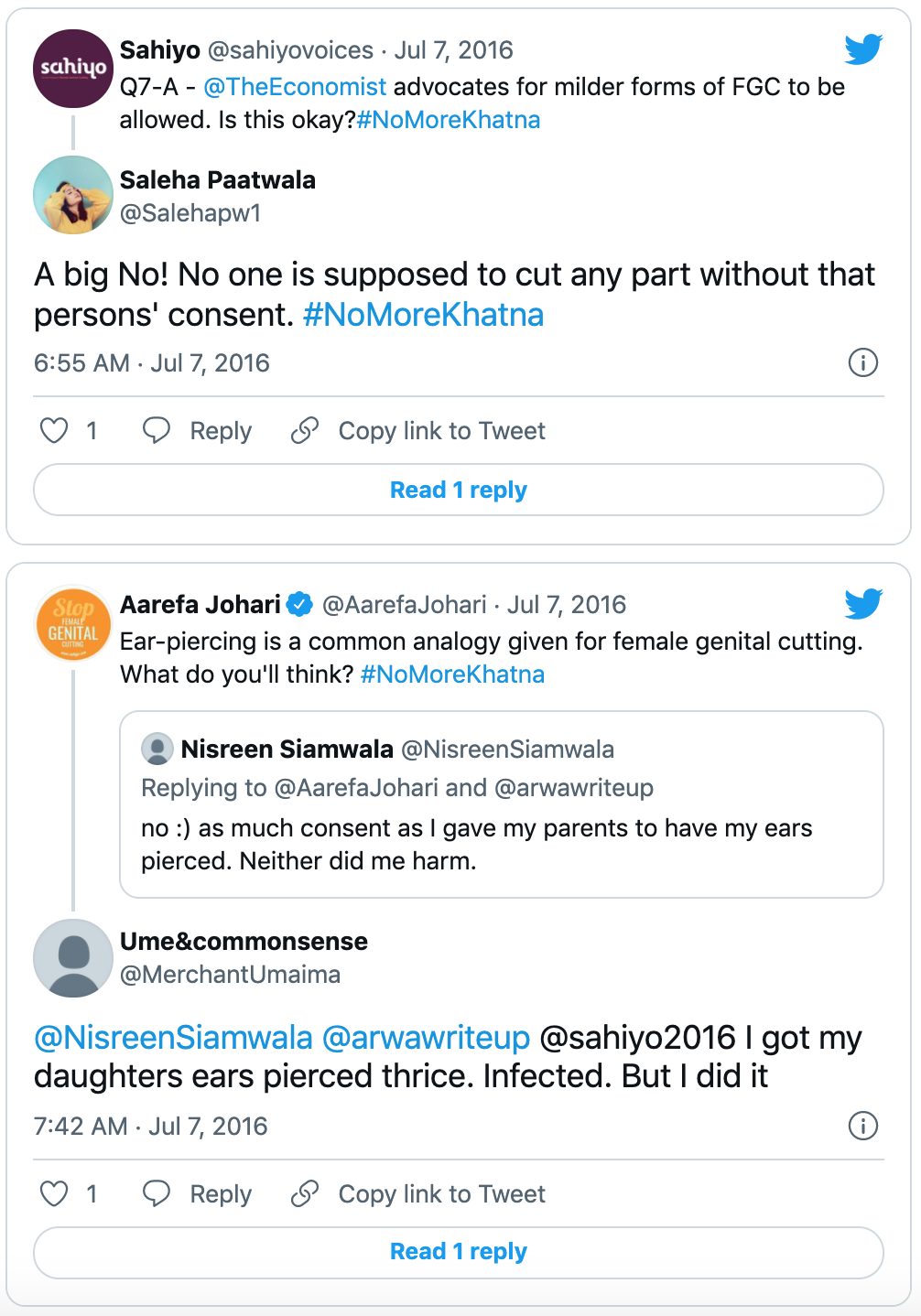
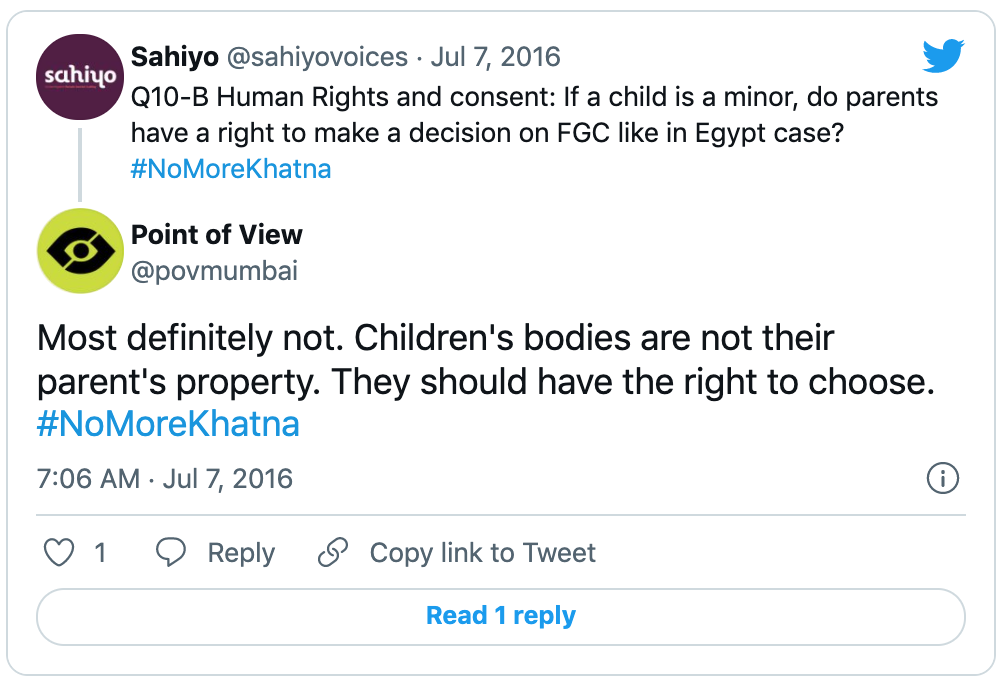
While these tweets are just excerpts from a much larger Twitter discussion held on July 7, you can read more about how the chat went by going through Sahiyo’s Twitter handle (@sahiyo2016) and the hashtag #NoMoreKhatna.
The chat helped us understand the challenges that lie ahead for all the women and men working to bring an end to khatna: even though any form of female genital cutting is non-consensual and a violation of a child’s universal human rights, the practice is steeped in faith and religion and there is a danger of khatna becoming medicalised in the Dawoodi Bohra community.
Fortunately, the Twitter discussion did not end after the two hours scheduled for the chat – it is encouraging to see that the debate continues even today!
To see the entire Twitter conversation on Storify, click here – https://storify.com/sahiyo2015/getting-started

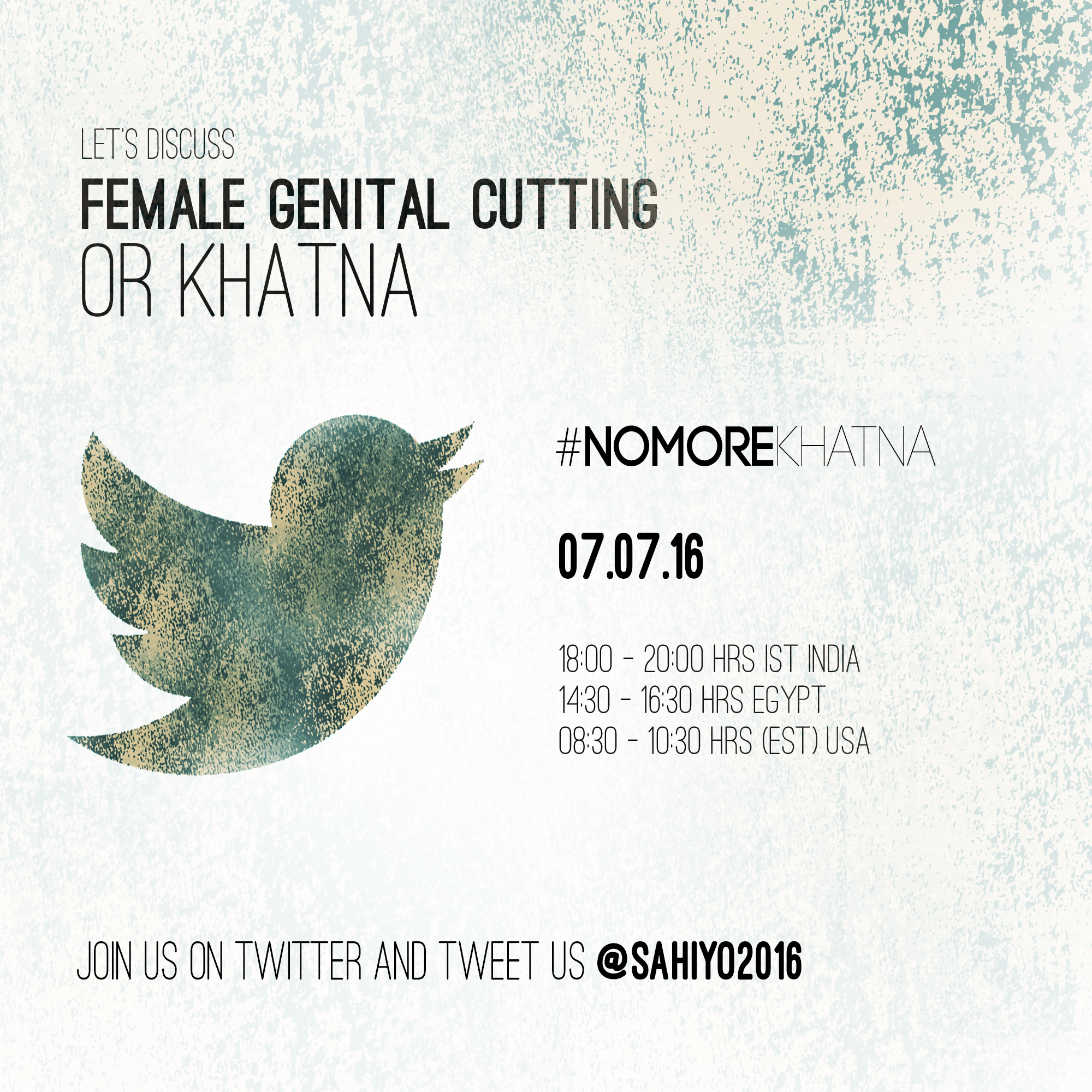
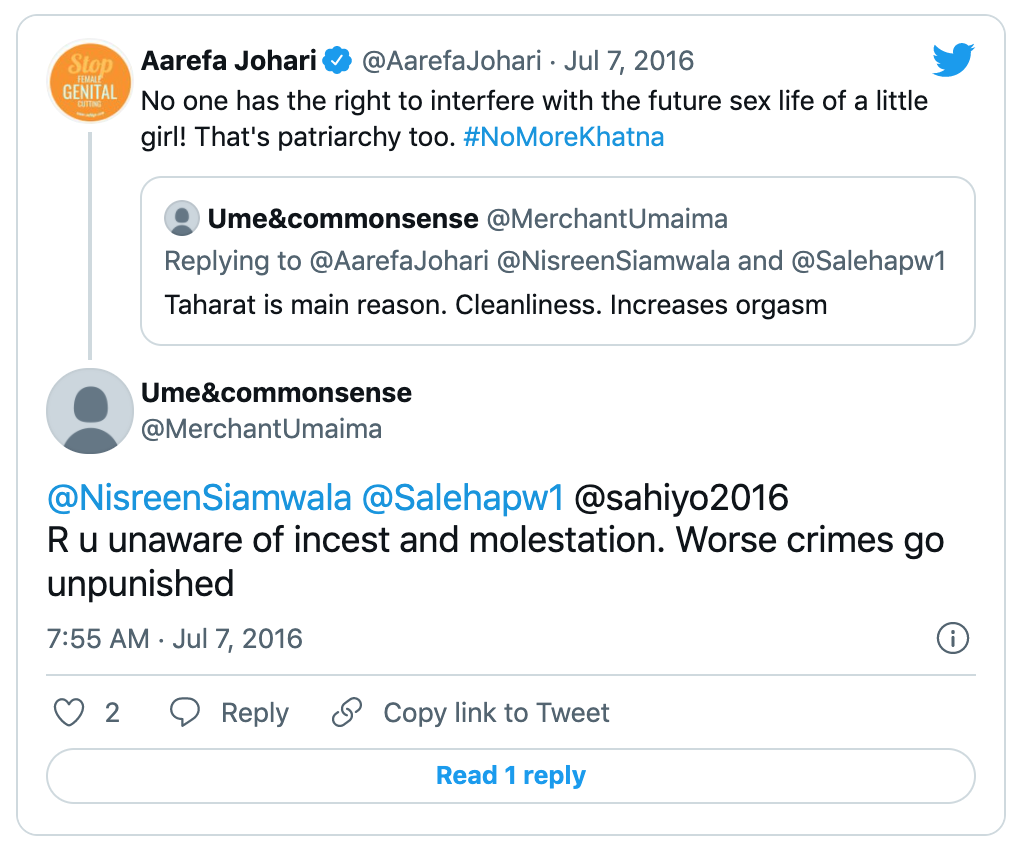
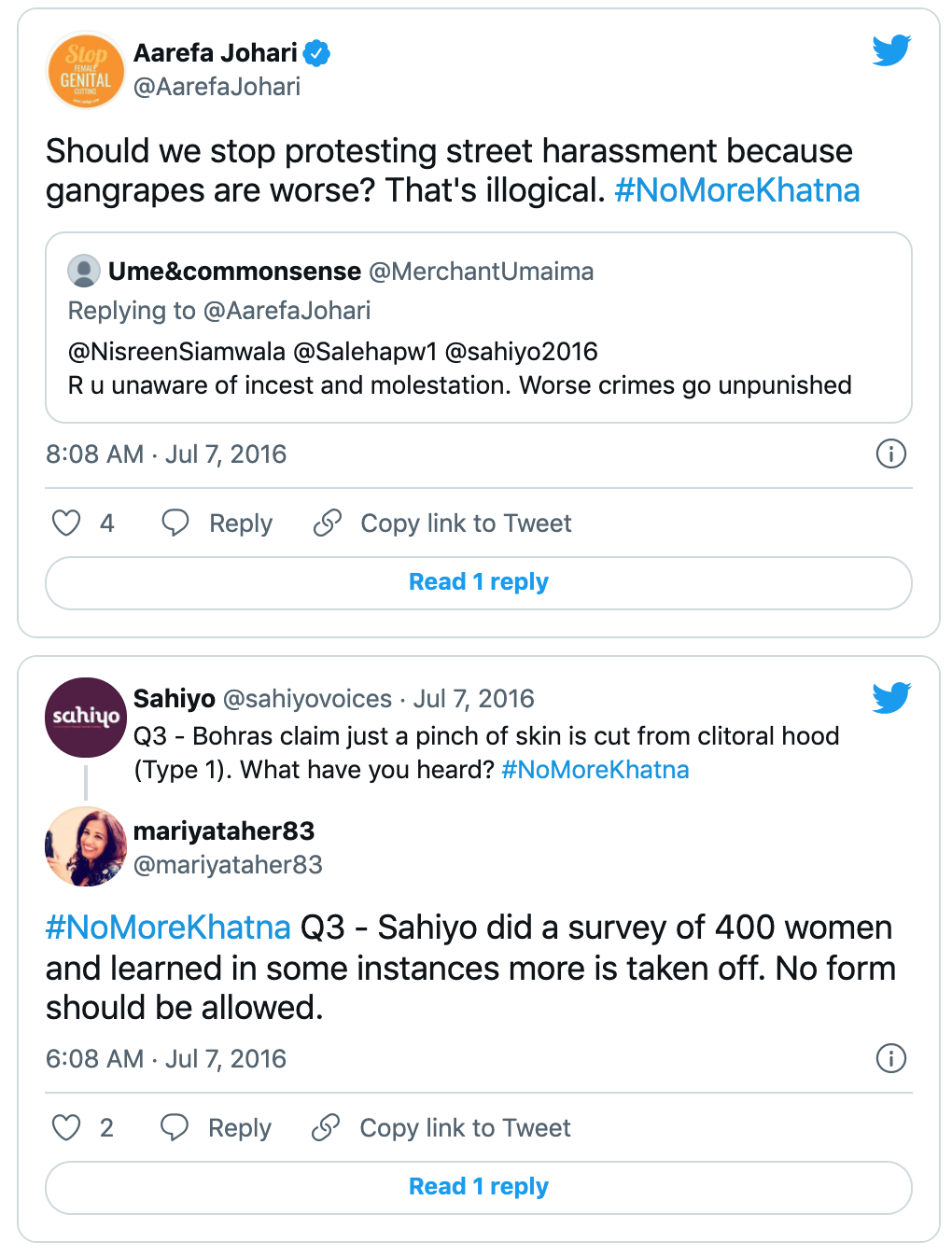

 Mariya: I have spoken to
Mariya: I have spoken to  Shaheeda:
Shaheeda:

